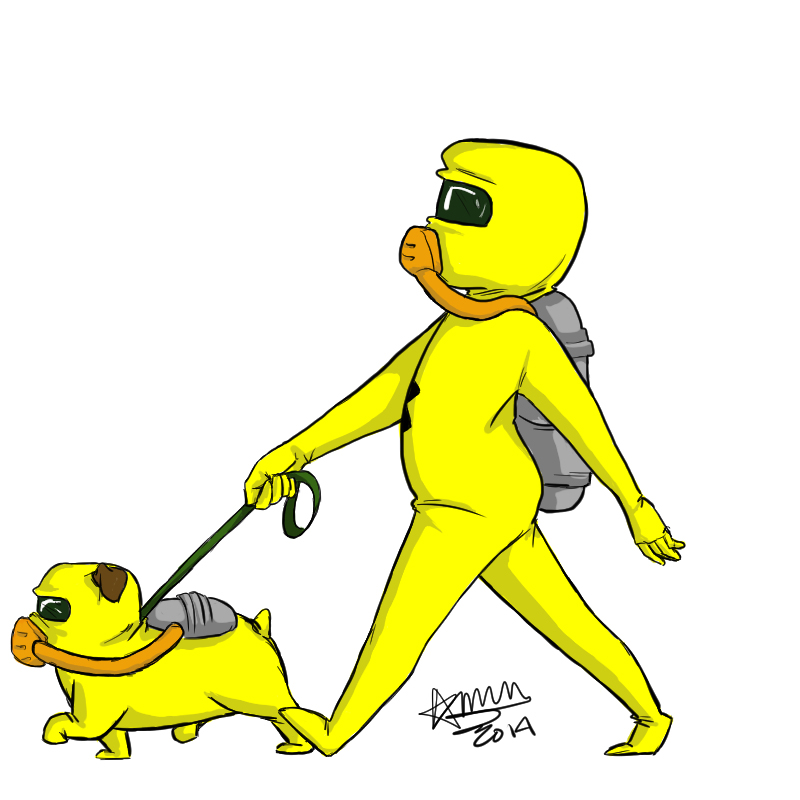I don’t care if you’re an MD, EMT, ATC, PT, RN, LPN, DO, DDS, DC, PTA, ENT, whatever, we all learned this in school and if you remember correctly, it was important. While not everyone in healthcare has a high patient volume or is always seeing people who are sick, there is a good chance that some time in your career you are going to be exposed to someone who is a carrier of an infectious disease. Whether it be Ebola, flu, HIV/AIDS, hepatitis, the common cold, or rabies, someone sometime around you is going to be ill. They may sneeze, cough, spit, bleed, vomit, defecate, or urinate somewhere on you, on your equipment, or near you. If this occurs, you should already know what PPE you need to have on hand and ready to go, how to put it on, and especially how to take it off.
Gloves
We’ve all worn gloves, latex or nitrile, probably even the psychologists and psychiatrists in the crowd at least once. If you need to come into contact with blood or another body fluid, wear gloves. This should be obvious as it is something we all learn in 9th grade health class, then again in basic first aid, then again in undergrad several times, and on and on.
Put gloves one at a time (duh?) after washing your hands. If you’re wearing a gown, gloves go on after the gown and over the ends of the sleeves. Remove gloves as shown in the video, taking the first one off by grasping the outside and pulling, then taking the second off by inserting two bare fingers into the glove and peeling it off without touching the outside. If you’re wearing a gown, gloves come off all in one piece when you remove it.
Mask or Respirator
Most hospital systems fit all of their employees for N-95 masks or respirators. You probably did this sometime during your extensive and boring orientation week wherever you were hired, and hopefully you didn’t drool on the poor tech who had to do the fitting. Masks and respirators should cover the nose and mouth snugly but not overly tightly as you don’t want to end up looking like you spend the afternoon making out with a Facehugger from Portal. Elastic bands or ties go behind the head, or over the ears if you have that model. The metal band in the nose can be pushed down to provide a more appropriate fit. When removing PPE, masks are taken off last.
Gown
Cloth gowns are worn for surgery or patients who might be a little messier. They keep your clothes fresh and clean and can easily be removed when your patient pukes on you. If you know that a patient is going to be exuding more fluid than just a little bit of blood or vomit and when there is Ebola potentially present, there are also plastic waterproof or plastic-lined versions available. As with any other PPE, your gown should be removed or changed if it becomes visibly soiled or has potentially had contact with a highly infectious disease. If you are wearing full PPE, your gown should be removed first. Pulling on the front quickly and forcefully will open the back of most models and allow you to pull out your arms, rolling the sleeves down inside out and removing your gloves at the same time. Touch only the insides of the gown and dispose of it in the appropriate place.
Goggles or Face Shield
Ah, the ever-present joke of the PPE world. While many surgeons I know frequently don face shields in case of gushers, I’m pretty sure not a lot of us are slipping the goggles on now that we’ve completed our last bio lab of graduate or medical school. In the case of Ebola however, goggles and face shields are no laughing matter – well, sort of. Ebola is capable of entering your body through your mucosal membranes, and this includes the tissue around the eyeball. If a patient vomits at you (yes at), there is potential for a splash to go into your eye. I’m sure we can think of a dozen other scenarios where you might be better protected with a face shield but we’ll just say that no one wants the eye-vomit Ebola and leave it at that.
As always, remember to take appropriate cleansing measures once you have removed your PPE. Dispose of PPE, soiled or not, in an appropriate place. If your work environment has designated a specific procedure or place to dispose of soiled PPE, be aware of this. If you remove your PPE and your clothing or your person is soiled underneath, remove soiled clothing, shower, and notify a supervisor.
Not everyone in healthcare is going to be exposed or potentially exposed to someone with Ebola. In reality, there are quite a lot of us, and almost none of us is really going to encounter an actual patient, at least this early in the game. That being said, you are still going to encounter a lot of people who think that they have contracted or been exposed to Ebola virus. Wearing appropriate PPE will be good practice for you and will reassure the public that we’re taking it seriously and actively making efforts to keep them safe, even if it does make us sigh internally and giggle in the break room.




